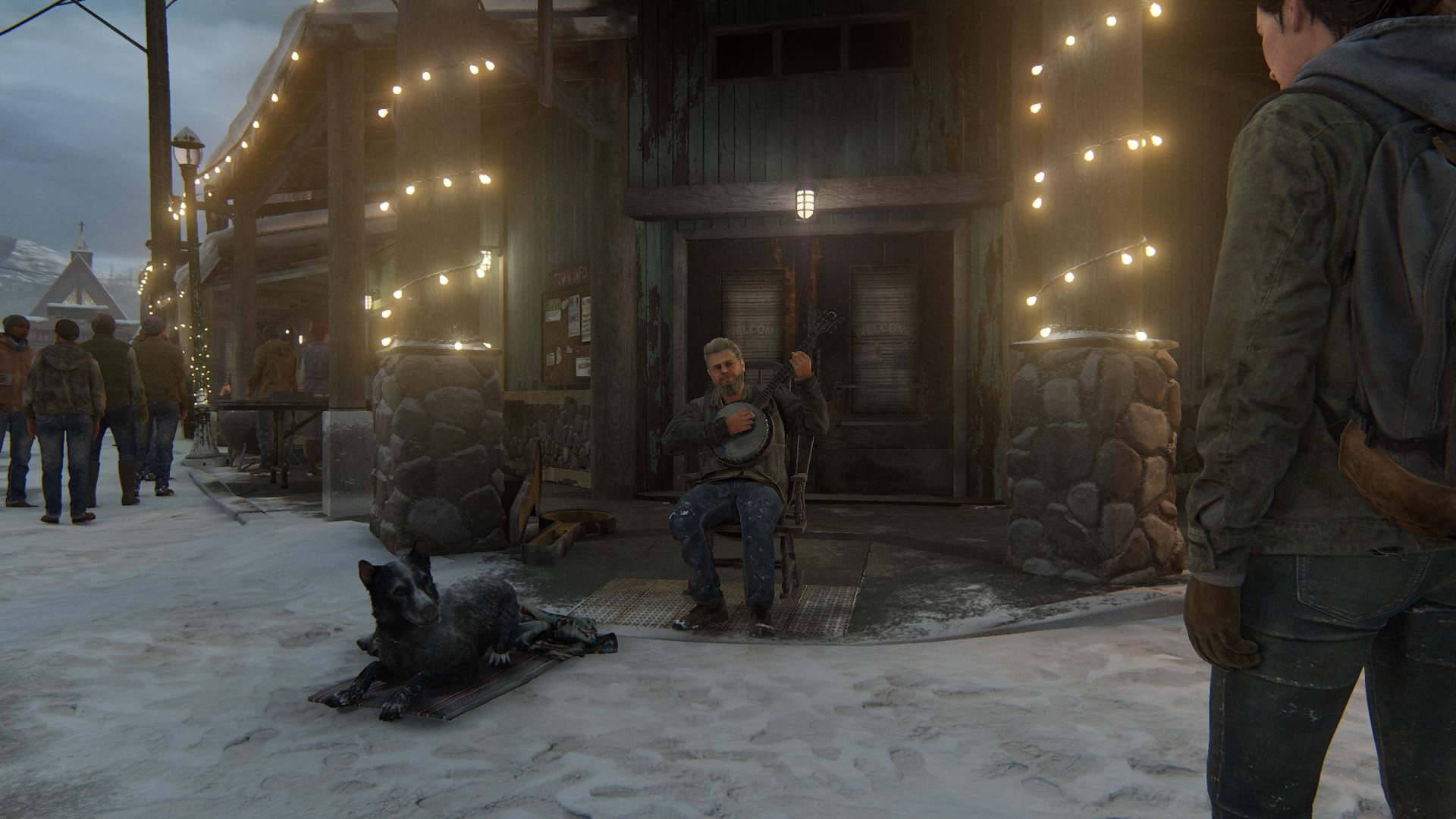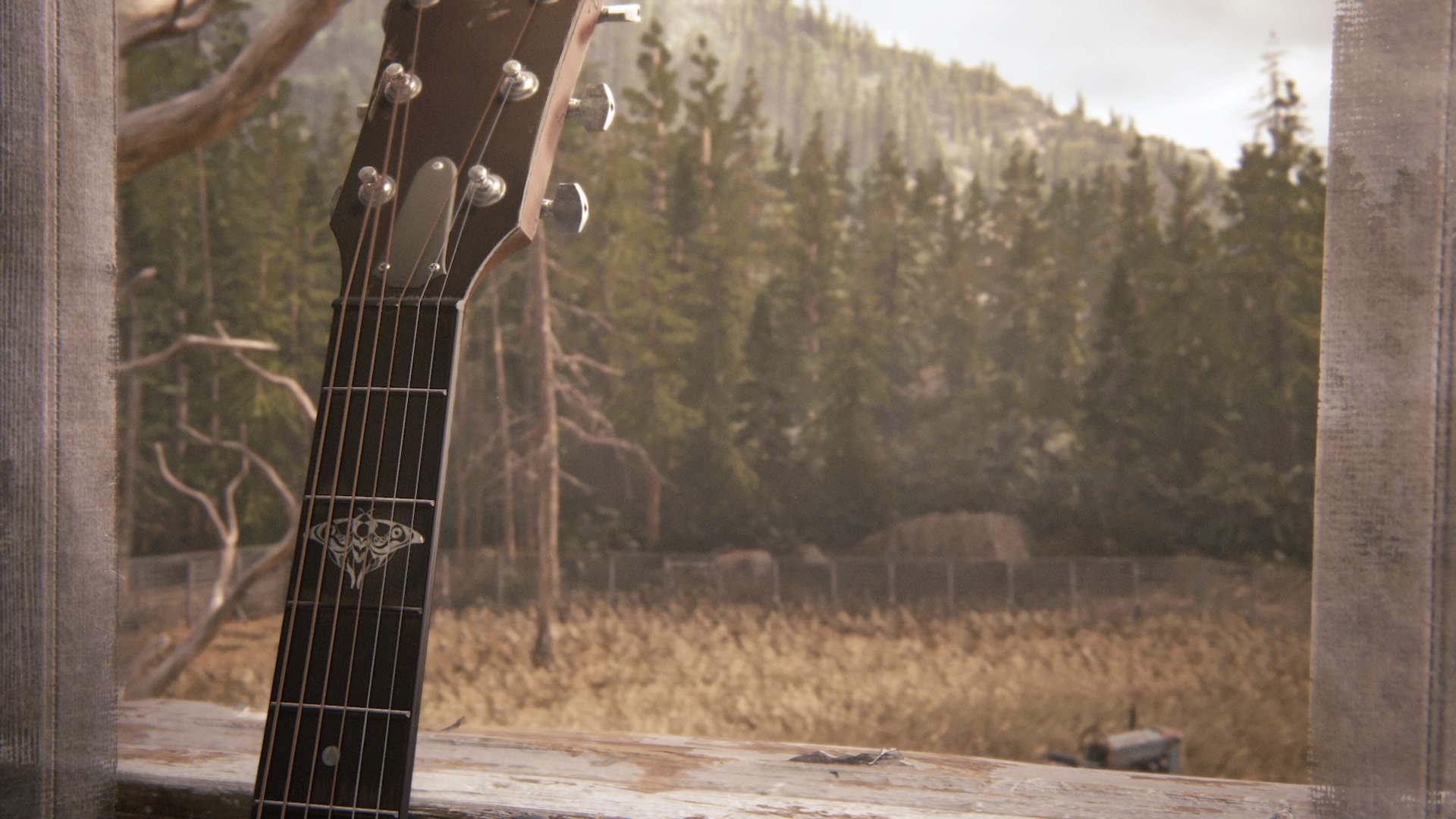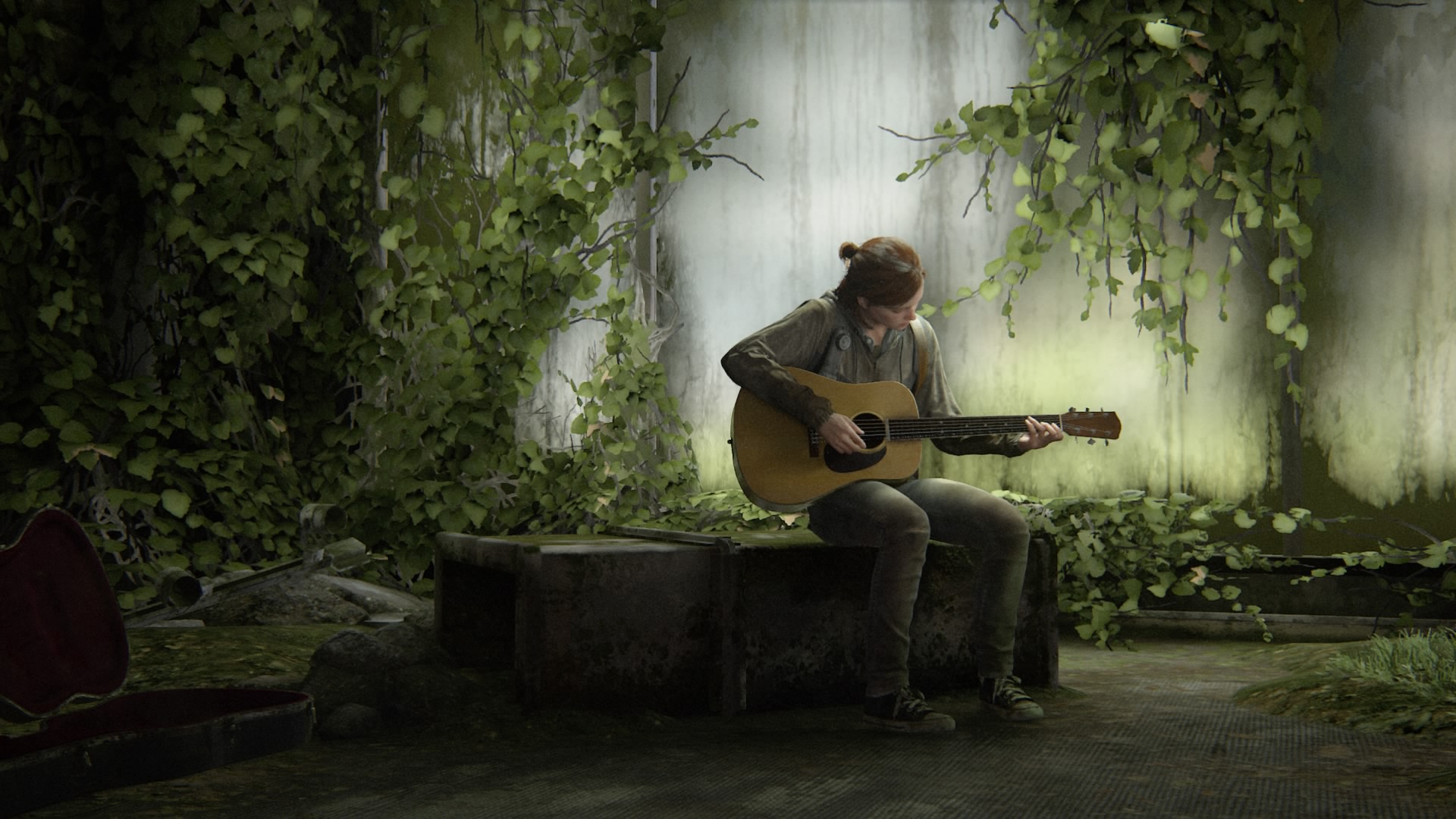Inside the music of The Last of Us 2 with composer Gustavo Santaolalla
Interview: the sound and the fury of The Last of Us 2

The dystopian Seattle of The Last of Us 2 is a vision of the Pacific-Northwest unlike anything witnessed in the pages of Lonely Planet. The cordyceps fungus has lain waste to a city flooded by busted waterways and overgrown with foliage, which only serves to camouflage its diseased population. Rusted campervans share blocked highways with abandoned tanks and the detritus of a guerrilla conflict that is dysfunctional, desperate and coming to get you.
But amid the chaos of this beautiful apocalypse there are scraps from the past and connections with a vanished life that help to build the humane core running through Naughty Dog’s universally lauded new blockbuster. Here, for example, you will find the Valiant Music Shop. Scavenge beyond the corroded synths and warped vinyl to discover an acoustic guitar, where Ellie can practice her newfound craft and, even, strum the chords of A-ha’s Take On Me.
Indeed, for all the accompanying headlines around character bloodlust, crunch culture and LGBTQ+ themes, music plays a decisive role. It’s there in the unblinking devotion of Joel’s Future Days Pearl Jam cover, Ellie’s reworking of New Order’s True Faith – with its bullseye refrain of "My morning sun is the drug that brings me near. To the childhood I lost, replaced by fear" – and also, of course, in the soundtrack of Gustavo Santaolalla.
Like The Last of Us, the overarching tone of this immersive experience is set by the Argentinian composer, who feels as integral as any component in realizing the bleak heart and wilderness soul of these debased environments. Santaolalla, who won Oscars for his Brokeback Mountain and Babel soundtracks, sees clear parallels in his methods across cinema and gaming.
Musical score inspired Last of Us 2 storylines

"I work differently from some other composers," Santaolalla tells TechRadar. "The industry standard in the film world, the movie is made and they create a rough edit and start adding temp music and the composer comes at the end. I don’t work like that. All the movies that I have done, a lot of the music and in some cases the whole score, for example Brokeback Mountain, I did the whole score before one frame had been shot. The themes, the sonic fabric, all that was done prior to the filming.
"Neil [Druckmann] has said that certain parts of the music have triggered him to write new scenes that he didn’t have at the beginning."
"Ang Lee played the music to the actors and he listened to it on the set and it became an intrinsic part of the movie and that’s the way I like to work, from the story, the characters, much more than a particular scene. I am briefed about the story because that is the way I connect. I draw my inspiration from the script, from the characters and the interpretation of the director, the writer, the visionary that comes up with the concept. At that point, I will start composing, playing and recording the score."
As Santaolalla notes, this approach creates a contextual counterpoint that allows the creative work and game narrative of writer and The Last of Us 2 director Neil Druckmann to be influenced by the music, rather than vice versa. "The soundtracks come together over a period of two or three years," he continues. "I deliver parts of them in batches. Neil has said that certain parts of the music have triggered him to write new scenes that he didn’t have at the beginning. It’s a much more artistic, collaborative effort.
Sign up for breaking news, reviews, opinion, top tech deals, and more.
"I have a lot of freedom to try different things and to experiment," he explains. "I had that protocol established in films but with video games it also needs to be like that because it takes so much time to get approval on what is going to be rendered that you can’t wait until the last moment to do the music. You really are working on the basis of the story, the characters and your imagination and, of course, some drawings and especially after the first game you are more familiar with the visual language."
Naughty Dog delivers narrative with “real weight”

Throughout his conversation with TechRadar, Santaolalla is keen to embrace the flexibility of this medium, while reflecting upon the broader possibilities it provides. But did he feel a different approach was required for the music of The Last of Us 2? While joking that "no one, certainly not me, wanted a Rocky 8 or Raiders Of The Lost Ark III", he says they were keen to impose both clear textual associations and elements of melodic progression, for example in the introduction of the banjo to the instrumentation.
"I love the story. I knew it was going to be controversial and that people were going to freak out with elements of it."
Sporting a beard that has "blossomed" during lockdown, he comments: "Everything for me happens on an emotional platform. That’s where I’m working. I felt that I wanted to bring in new elements. Keeping some of the themes, the melodic motifs but extending some of these original elements that have become a signature of the game."
Equally, while there has been a minor shift in approach from a sonic perspective, Santaolalla feels it is apparent that the grim, grinding persistence of chunks of the storytelling are impossible to ignore. He admits being "captivated" by the journey Ellie is taken on in delivering an experience that, via the collective work of Druckmann and Naughty Dog, has "real weight".
"I love the story. I knew it was going to be controversial and that people were going to freak out with elements of it," he comments. "It taps into some deep things around the human condition. The fact that you can be put into the place of the other and see things from the other side, it’s quite deep. Neil says that the first game was about love and this is about hate. I feel that everything is about love and that hate is a perverse way of expressing love. It’s not that they are two sides of the same coin."
"I’m in the game playing the banjo!"

In terms of the formal soundtrack, Santaolalla is charged with creating the "emotional" character-based elements, while fellow composer Mac Quayle delivers the "action", electronic passages that accompany the more punishing and brutal gameplay. Although the music should be both emblematic and stateless, he agrees that South American influences and the cinema culture of classic Westerns are key, alongside familiar atmospheric traits such as being "economic with the use of notes and exploitation of silence".
"There is a distinctive thing that comes from my identity, which I have always been interested in exploring."
"There is a distinctive thing that comes from my identity, which I have always been interested in exploring," Santaolalla says. "The original theme to The Last Of Us was written on ronroco, an instrument from the Andes Mountains in a 6/8 rhythm, which is a South American/African rhythm. Yet, it fits, because I think we live in a world now that allows us to have this mixture.
"The banjo, which comes from Africa, has this Americana flavour but I knew I was not going to play it like a normal banjo player just because I’m not taught to do it ‘the right way’. I’ll do it my way and see what happens. I love how it turned out. I tried a lot of different styles and I have to confess that I had some second thoughts about what they were going to say. But Neil loved it too and they went for it and, of course, I’m in the game playing the banjo!"
While there are no major spoilers in this article, it may come as a surprise to some that Gustavo Santaolalla can be found seated in a rocking chair, plucking a melody alongside a mangy dog at the start of The Last of Us 2 in the Jackson village.
On plans for The Last of Us HBO TV show

Although not a gamer, Santaolalla’s teenage son certainly is, which presented a problem when Naughty Dog invited him to be scanned ahead of his animated guest appearance.
"The most difficult thing was that I could not share this with anyone because I know I can’t tell my son as he would tell his best friend and then somebody else. I kept it to myself for almost a year," Santaolalla explains. "Also, I really didn’t know if I would be there in the final cut. When the game came out and I realized I was there it was very rewarding. I’m close to 70 and sometimes when I talk with kids I think of them when they are much older and talking about playing The Last Of Us, remembering the music and I’m there in the game. I think it’s very nice."
Santaolalla, who has toured the world as a musician, playing in the band Bajofondo and earning 18 US and Latin Grammy Awards, believes there is something unique in the relationship he has built with fans of the game. Identifying it as "a deeper connection" than with other cultural forms, his involvement with this world will be furthered by the forthcoming HBO TV show The Last of Us, which is being developed in tandem with Druckmann and the team behind Chernobyl.
How does he expect the tone and composition to differ? "There is an aesthetic to the music that is going to be present. I don’t see, for example, that the series is going to have an orchestral score," he explains. "We haven’t started working on it yet but I envision that the main themes are going to be reprised in different ways and forms. But there are also going to be new themes that emerge."
Gustavo Santaolalla is set to play a number of rescheduled live shows in 2021. Find out more about the dates here.